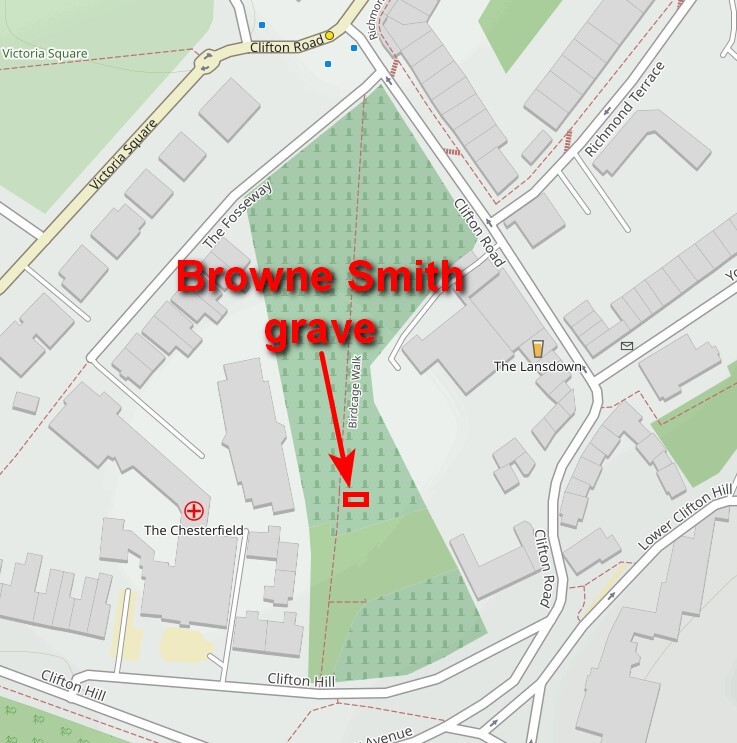In the middle of the eighteenth century, a young Scotsman called George Smith set sail for China to make his fortune as a private trader and broker in Canton. Around seventy years later, two of his eleven children, Henry Browne Smith and Jane Maria Smith settled in Clifton and are buried together at the southern end of St Andrew’s churchyard, close to Birdcage Walk.
Born in Madras in 1787, Jane Maria was two years older than Henry, who was born near Guildford, Surrey in 1789. Henry was named after his godfather, Henry Browne, former head of the East India Company’s Council of Supercargos in Canton, who arranged an East India Company military cadetship for him in 1803 that led to his commission in the Madras Cavalry. The statutes of the East India Company stated that no one could join after the age of sixteen, a policy that caused some concern. As British missionary, the Reverend Claudius Buchanan, pointed out in his 1805 memoirs, the Empire was run by men, “who came out boys, without the plenitude of instruction of English youth in learning, morals, or religion; and who were let loose on their arrival amidst native licentiousness, and educated amidst conflicting superstitions.”
In the same year that fifteen year old Henry sailed for Madras, Jane Maria aged seventeen, married another East India Company man, Henry Hornby, under special licence at St Luke’s Chelsea. Four months later in January 1804, their daughter Elizabeth was born in Bombay. Moving to Vizagapatam, a port city in the Madras Presidency that had recently been captured from the French, the Hornbys had two more children. Then in 1812 Henry Hornby died. Exactly a year later in August 1813, Jane Maria married her brother, Henry Browne Smith at Fort St George in Madras.
Although incest was not illegal until 1908, it was against canon law. Also, the fact that Lord Byron fled England in 1816 amid rumours of an affair with his half-sister, Aurora Leigh, shows that incest was considered transgressive. However, while it is probable that Henry and Jane Maria were disowned by their close relatives, since neither was mentioned in family wills, they appear to have avoided censure in India. On the contrary, Henry rose steadily in the Madras Cavalry and accumulated sufficient wealth to retire in 1839 as a Lieutenant-Colonel.
Henry and Jane Maria first appear in Clifton in 1851, living in lodgings at Sion Spring House with their grand-daughter, Louisa Alexander and looking for a more permanent home. Within five years, they had moved to Alva House on Litfield Place, where they lived until Henry’s death in 1866. A widow once more, Jane Maria moved back to Sion Spring House with Louisa and it was here that she died ten years later in 1876.
Smith grave (Campbell 412) west side of headstone
General view of the grave, under the copper beech in the south east of the churchyard
Location of grave in the churchyard - the grave is best viewed from Birdcage Walk. Be warned that walking among the crowded gravestones can be muddy and slippy underfoot, with many potential trip hazards.


